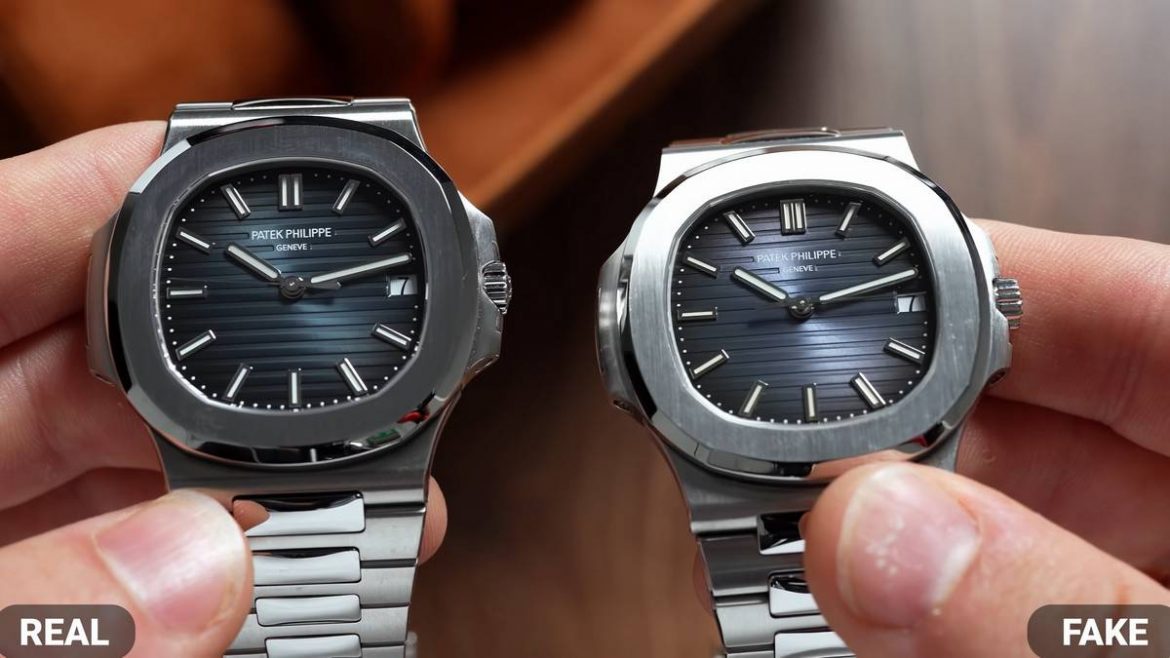Patek Philippe introduced the Nautilus in 1976. All these years later, it is still a symbol of peerless perfection. It is not every day that the world’s most expensive watch is one made of steel, but that’s the grandeur of the Nautilus. It was the first luxury sports watch with a revolutionary design that was considered daring at the time. Ever since, watch lovers have wished to see a Patek Philippe 5711 on their wrists as much as a fashionista wishes to own a Birkin or a car lover, a Ferrari. Regarding watches, matching Patek Philippe’s craftsmanship and finesse is not everyone’s cup of tea.
Having said that, it is not that people aren’t trying to clone the legendary timepiece but are also coming frighteningly close to the real deal. Counterfeit culture is booming and, in many ways, is a lot like a pandemic- it’s omnipresent, attacks every segment (watches, handbags, clothes, etc.), and looks like it’s here to stay. Being able to tell a fake from an original has never been more critical, but when the imitation is near-perfect, how to does one tell them apart? There are a few essential means we have highlighted, from Jenni Elle’s Youtube video that draws a comparison of a high-end fake $500 Patek Philippe 5711 ‘super clone’ to an authentic $60,000 Patek Philippe 5711, the Holy Grail of the watch world:
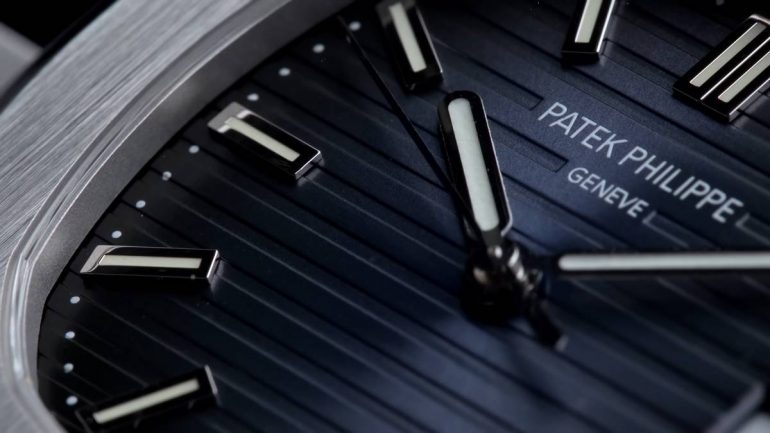
The watch enthusiast correctly articulates that it is easiest to tell a fake from an original when you have the latter in hand for immediate reference. In the case that a reference model is missing, you need a keen eye and should know exactly what you’re looking for. As with luxury handbags, the finish, details, and fine touches are what one concentrates on in luxury watches. If you know how to decipher those, you have found yourself a new hobby!
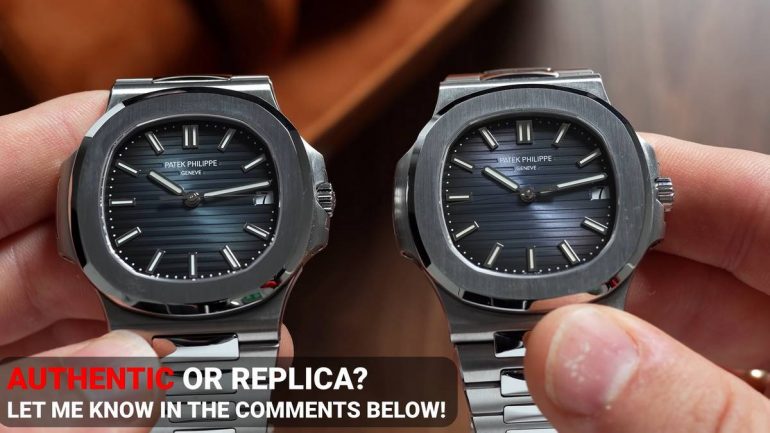
The first and most in-your-face tell is the face of the watch- its dial. The dial of the Patek Philippe Nautilus 5711 looks striking with a distinctive color- A typical Patek blue dial with a hint of green. The replica, though good-looking, is evidently missing the tint of green. The difference is only possible to spot when placed next to an original.
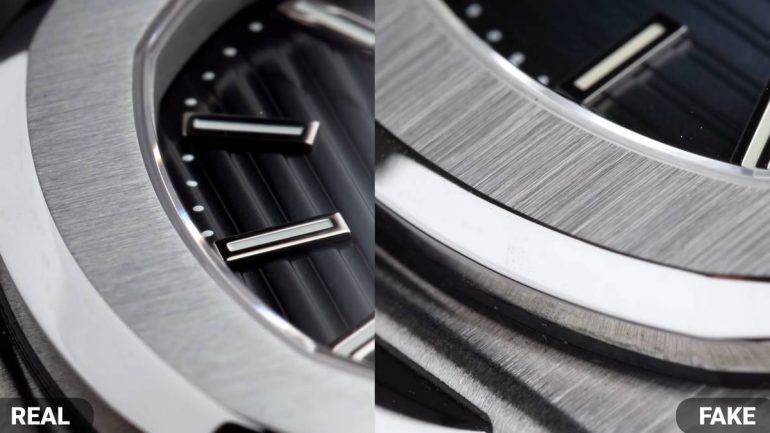
Proportions of the case are another key feature when identifying a fake luxury watch. The original Patek Philippe is a fine watch with a narrow and a super smooth brushed bezel. The imitation watch is not as delicately handled in terms of the smoothness of the bezel; that is also wider.
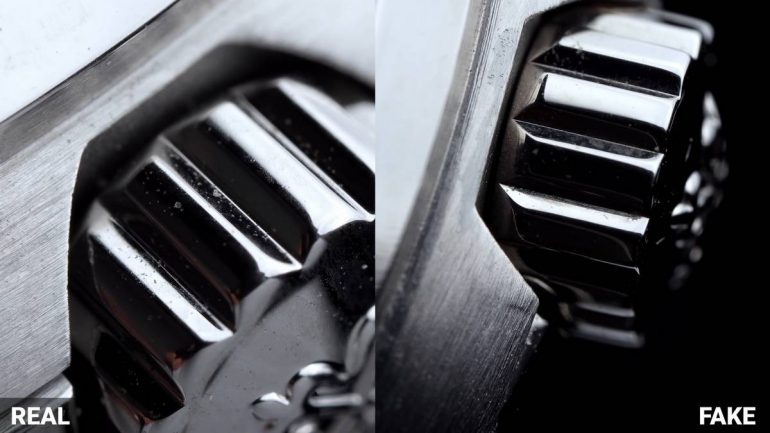
On the right side, the crown of the watch is a small yet sure shot cue to tell a fake watch. Unlike an authentic and elegant Patek Philippe 5711, the crown of the replica sticks out more.

Those who own a Patel Philippe Nautilus would know a fake from an original the minute they try one on. As the watch enthusiast in the video admitted, even the best fake Patek Philippe watch cannot copy the delicacy of an original, which is apparent in the thickness. The movement inside the replica is a run-of-the-mill movement that adds to the height of the watch.

Sometimes to tell the difference, one needs to know the watch really well from its minutest details, curvatures, to its proportions. Patel Philippe Nautilus comes with pronounced watch edges at the beginning of the bracelet. This part is relatively flat in the fake watch, making it look ordinary.
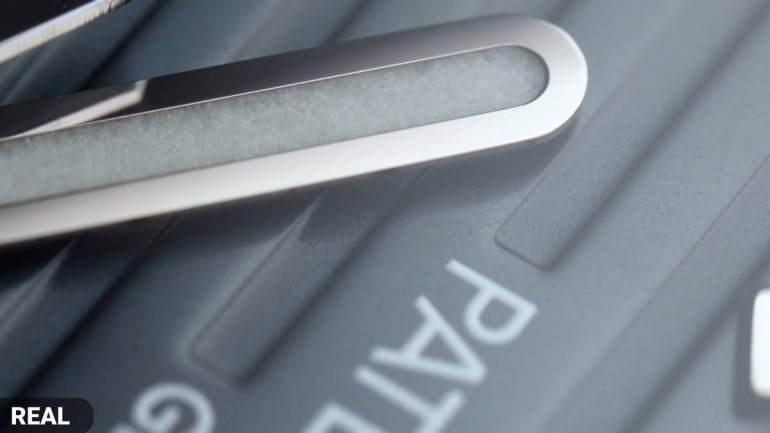
The authentic Nautilus is all about perfection in the most diminutive corners. The hands of the watch are flawless creations with no disruptions. The same cannot be said about a fake. It is a detail that can catch an expert’s eye even without a reference watch. That’s a warning sign right there! A magnifying glass will help you glance at poorly finished details and irregularities that don’t feature in a $60,000 timepiece.
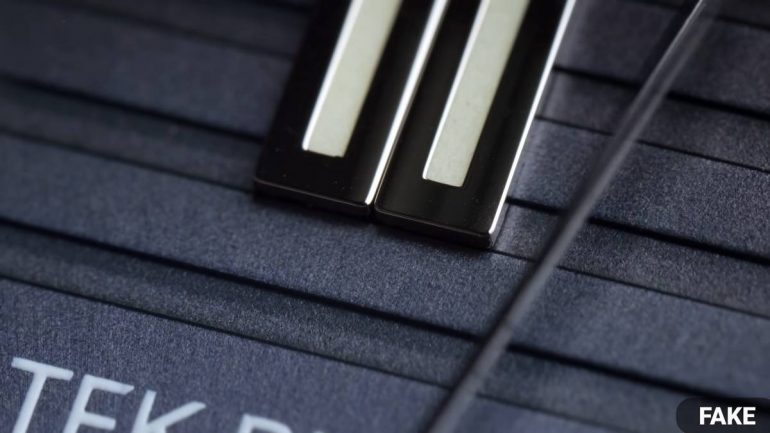
Hour markers on the Patek Philippe are also a way to identify a fake if you look closely enough. The Nautilus replica also sports rectangular hour markers but is not as well finished as the original. The edges are not rounded, making the 12 o clock markers almost merge.

The date display of the replica displayed more than just the date- some very evident texture in the background that one would never find in a fine Patek Philippe watch. The only way to tell this difference is with a magnifying glass.

The movement at the back of the watch is the most noticeable difference. While Nautilus has a see-through face back, which the forgers have tried to replicate, it is shoddily made. The surfaces are rough, lettering is not done by hand, and this portion looks clearly phony.

Several details are amiss in the movement of the counterfeit version, such as the placement of elements and different sizes of rotors. In addition, an original Patek Philippe only uses rubies as bearing jewels, whereas this fake uses a stone resembling an amethyst.
Jenni Elle is a watch enthusiast, collector, and YouTuber who reviews watches and is an ace at pinpointing a fake. Over time, Elle has made a reputation for reviewing watches that cost anywhere from $20 to $300,000. People now rely on her channel and her personal opinions about market trends, new models, and learning fascinating facts about the intricate world of horology.
